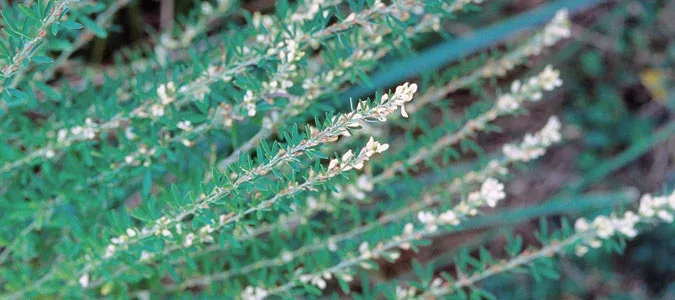
Chinese or Sericea lespedeza was introduced in the late 1800s by federal and state agencies for use in bank stabilization, erosion control, soil improvement, mine reclamation, forage, hay and other purposes. It has been escaping from plantings for many years and is a well established invasive plant.

Plant: warm season, perennial herbaceous plant with an erect growth form, 3-5½ feet in height; mature stems are somewhat woody and fibrous with sharp, stiff, flattened bristles.
Leaves: each leaf is divided into three smaller leaflets which are narrowly oblong and pointed, with awl-shaped spines and wedge-shaped bases; leaflets are covered with densely flattened hairs, giving a grayish-green or silvery appearance.
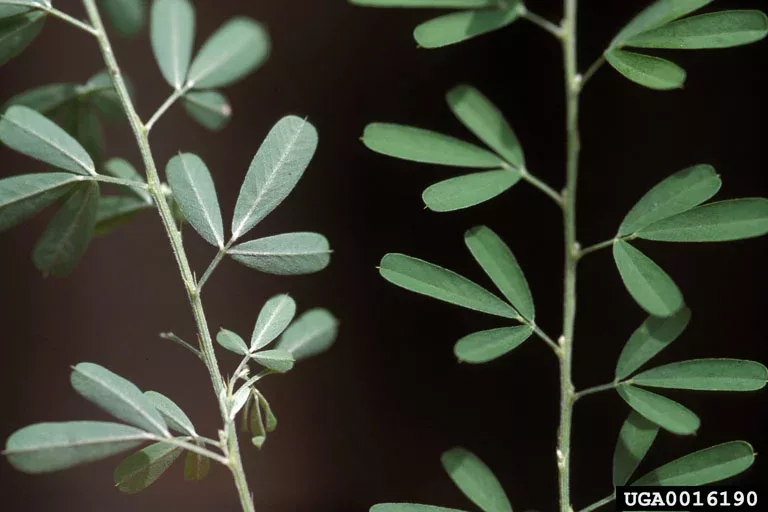
Flowers, fruits and seeds: flowers small (about ¼ in.) creamy white to pale yellow with central purple spots, single or in clusters of 2-4 in axils of upper and median leaves, summer; fruits form in fall; seeds tiny, bean-shaped, yellow to light brown.
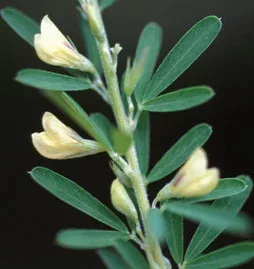
Spreads: by seed that is consumed by animals such as bobwhite quail and passed through digestive tract and deposited in new locations.
Look-alikes: other species of Lespedeza including native and non-native species.

Chinese lespedeza occurs throughout much of the eastern U.S. from Minnesota to Texas east to New York and Florida. It is found in a variety of habitats including fields, prairies, floodplains, pond borders, stream banks, swamps, meadows, open woodlands, roadsides and other disturbed grounds, prefers full sun and is not tolerant of much shade.
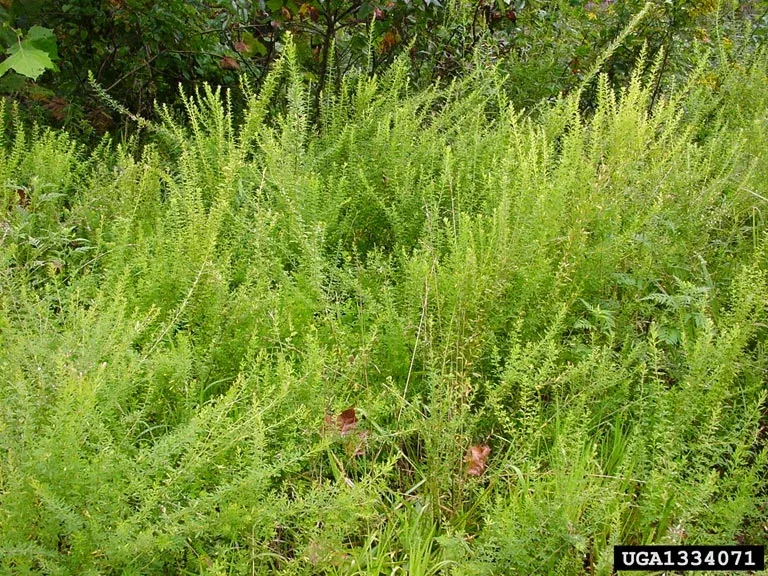

Chinese lespedeza poses the greatest threat to open areas such as meadows, prairies, open woodlands, wetland borders and fields. Once established, it out-competes and displaces native plants, forms extensive monocultures and develops an extensive seed bank in the soil, ensuring its long residence at a site. Its high tannin content makes it unpalatable to livestock and most native wildlife.
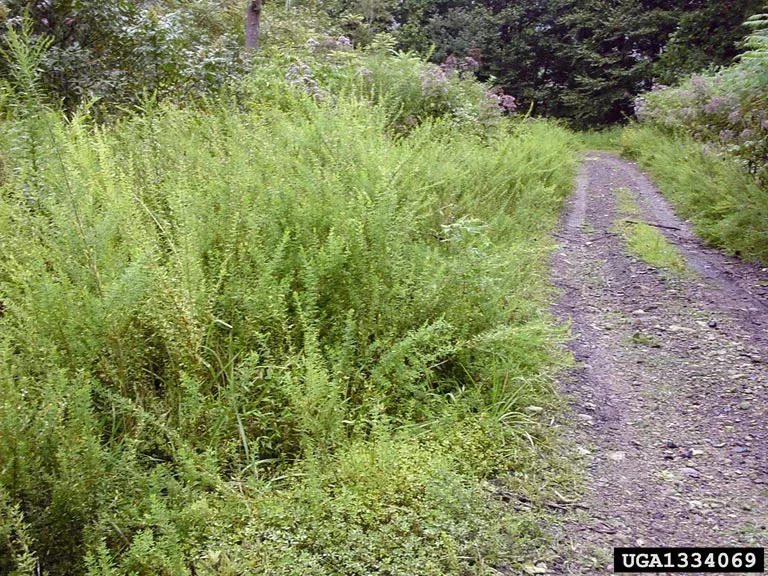

Do not plant Chinese lespedeza. Hand pulling is impractical due to lespedeza’s extensive perennial root system. Mowing plants in the flowering stage for two or three consecutive years may help control it. Plants should be cut as low as possible. Systemic herbicides can be effective when applied in early to mid summer (see Control Options).
